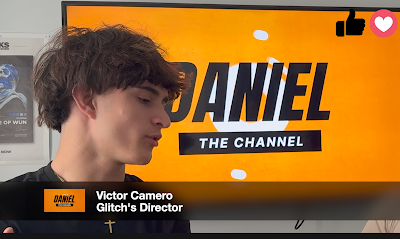Hi again! Happy Friday. Yep, I almost finished... Today, I posted about question number 4:
How did I integrate technologies—software, hardware, and online tools—into this project?
To create Glitch, I first edited using iMovie and Final Cut Pro, allowing me to tune the pacing and add effects like slow motion. I also used video effects like black-and-white and coloring and a sound library to increase the tension.
 |
| Black and White filters |
 |
| Some sound effects that I used |
I stored all the videos on my iPhone's camera roll and would sync it with my laptop and desktop to export the clips to FinalCut. This worked without issues, which I didn't expect since I would run out of storage from all the clips.
I filmed using my iPhone 13 camera and my mom's iPhone 16 Pro Max, ensuring that shots were stable while experimenting with different lighting techniques. Using a tripod was helpful because it gave me precise stability, and I filmed myself during some clips.
I also researched horror filmmaking techniques through YouTube tutorials and film analysis blogs, learning how lighting, sound, coloring, and framing can create fear.
The YouTube video How To Shoot a Horror Film (2020) states, "Low key lighting is a lighting technique for films that focuses on accentuating shadows by using hard source lighting in a scene."
With the use of LED light, I added some coloring effects that contrast with the black & white style of my opening. However, I could have used red lights instead of blue because this color is one of the filmmakers' favorites to increase the horror genre's mystery.
The editing process 'cut to cut' was important, and Final Cut Pro is friendly because it has the same platform as other easy-to-use software I know, such as iMovie. According to Krock, a Media Review and Collaborations Platform, editing horror is about the pace. Amina (2023) wrote: "It sets the movie's pace, telling the director when to build up the tension and give the audience a short break. By changing the speed and number of cuts, editors can make scary moments last longer or bring them on faster." I tried to follow this advice.
Additionally, I incorporated royalty-free sound effects from some websites ( suggested by my teacher) to enhance the mood and use eerie ambient noises. (In past posts, I told you about this.)
The Foley is always fun to have, so I did a couple of them using karaoke microphones, which gave my production some distortion noises to immerse the audience in the protagonist's growing paranoia.
Through this process, I've better understood the horror genre, audience engagement, and digital filmmaking techniques. Glitch is a modern approach to psychological horror, blending classic suspense techniques with today's digital editing.
In my next CCR post, I'll break down my idea to present the CCR part of my project.
Keep in touch!






























